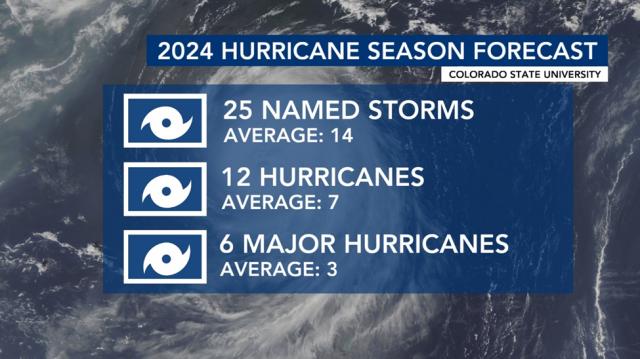- Report: Coastal flooding could threaten 1.4 million homes by midcentury
- Caught on camera | Tornado touches down in Missouri
- Carolina Hurricanes playoff tickets go on sale next week
- Storms kill 6 in the South and Midwest as forecasters warn of catastrophic rains, floods this week
- Weather Impact Alert: Cold front could trigger severe weather in Houston area this weekend | See timeline
Hurricane season will be more active than first predicted, experts say

After a nearly two-week track from Africa to Texas, Beryl is no longer a tropical system.
While some areas recover from its wrath, others breathe a temporary sigh of relief – emphasis on temporary.
It’s already been a busy start to the season. We’ve reached ‘C’ in the alphabet of storms. On average, that doesn’t happen until early August.
A plume of Saharan dust will keep the main development region in the tropics quiet for now. Its dry air chokes off the moisture necessary for tropical systems to thrive.
Just because it’s quiet, doesn’t mean it’s over. The climatological peak of Atlantic hurricane season runs from August 20 to October 10.
And experts with the Tropical Meteorology Project at Colorado State University issued a dire update to its forecast Tuesday afternoon.
They’re now forecasting 25 named storms and a dozen hurricanes; this includes what we’ve seen so far this season. Half of those are forecast to reach Category 3 status or higher.
One reason for a near-record forecast is the anomalous warmth in the Atlantic. You see several areas in which the water is warmer-than-average, and that warmth extends deep beneath the surface, too.
Another reason is the resurgence of a La Niña. This refers to cooler-than-average waters off the coast of Peru. While that may seem like something we need not focus on, its impact on Atlantic hurricanes is something that’s been studied extensively.
When La Niña is in phase, wind shear is lacking in the Atlantic. That allows tropical systems to maintain structure from the surface to the upper levels of the atmosphere.
Stick with WRAL News and WRAL.com all season long for updates on what’s brewing. You can also catch tropical updates streaming on WRAL+.





